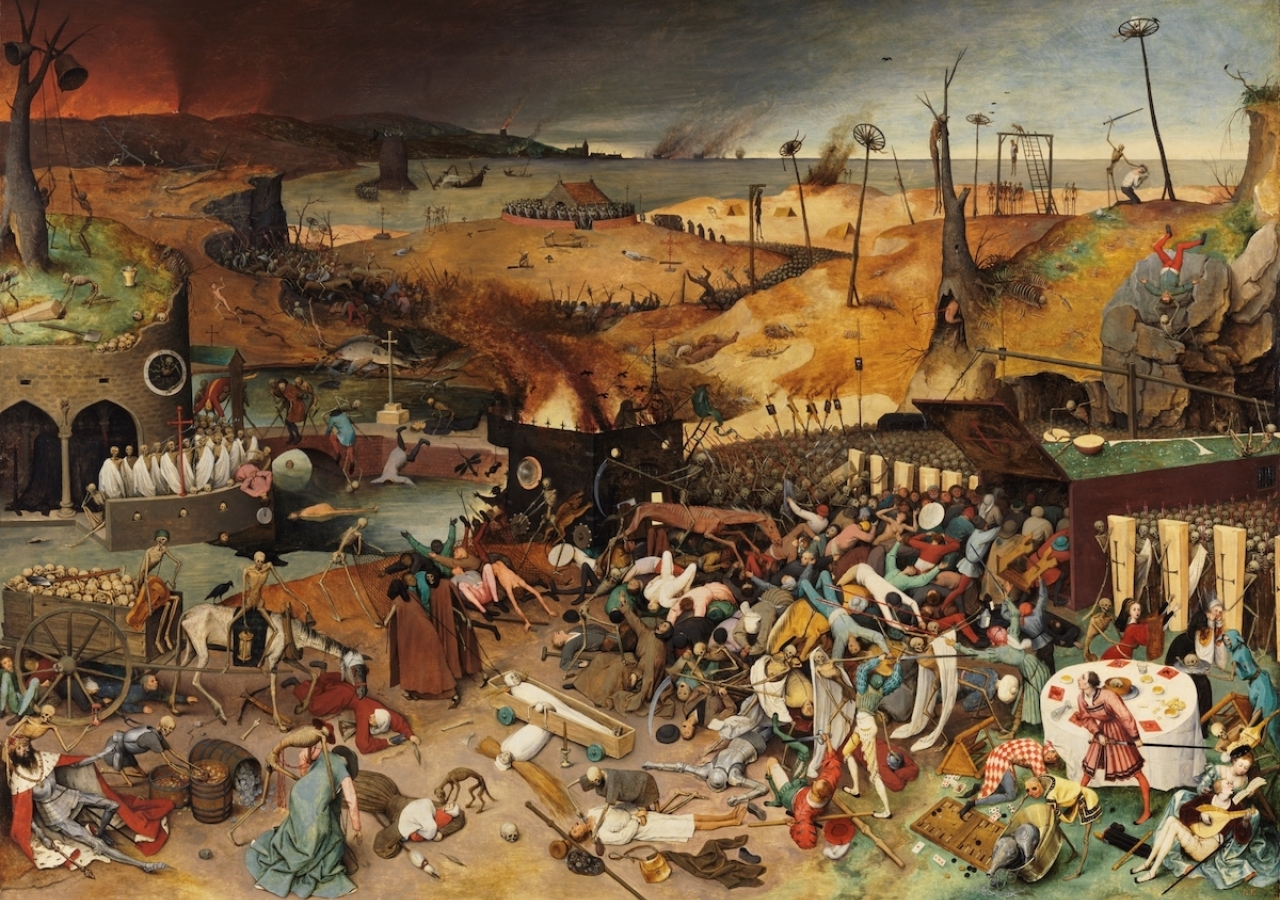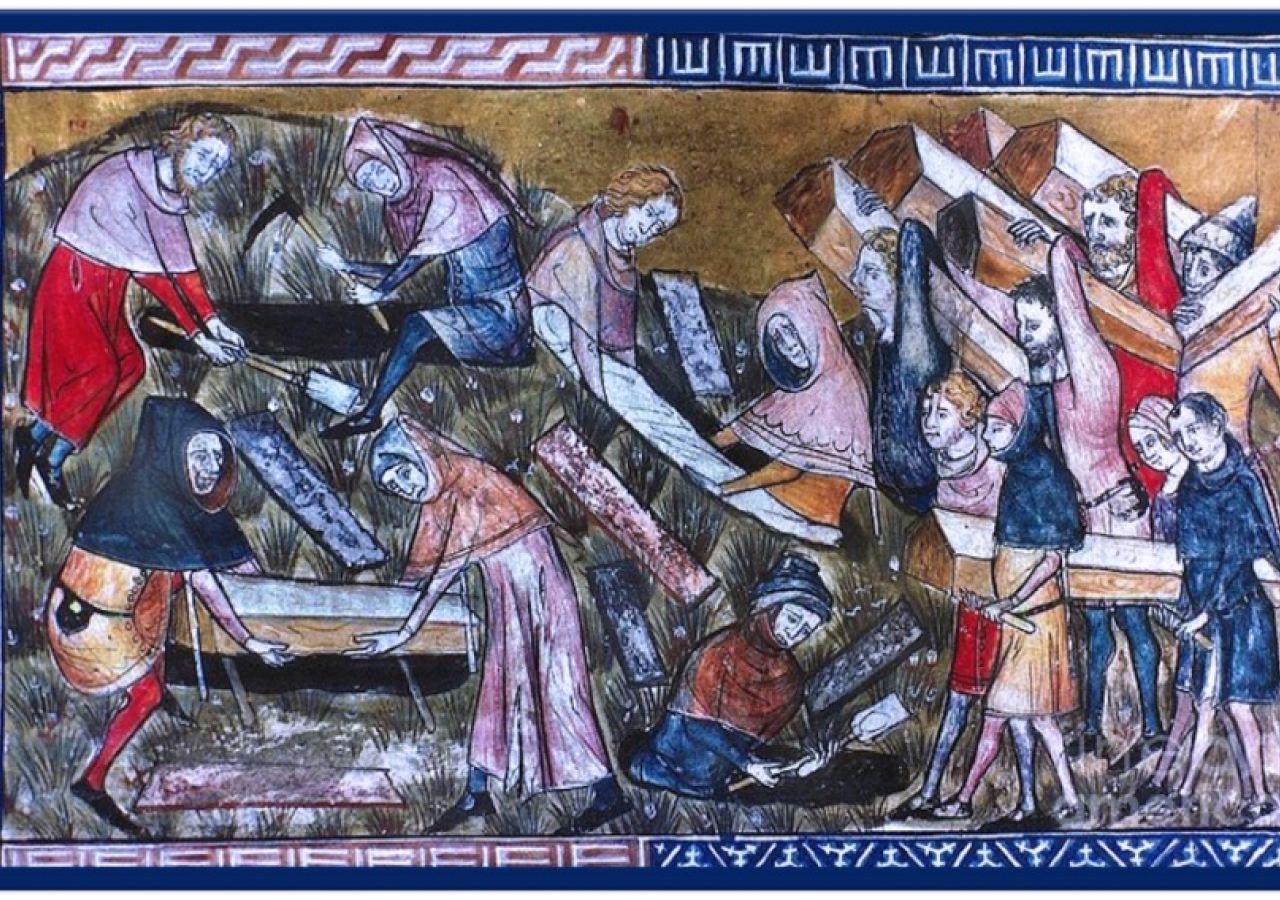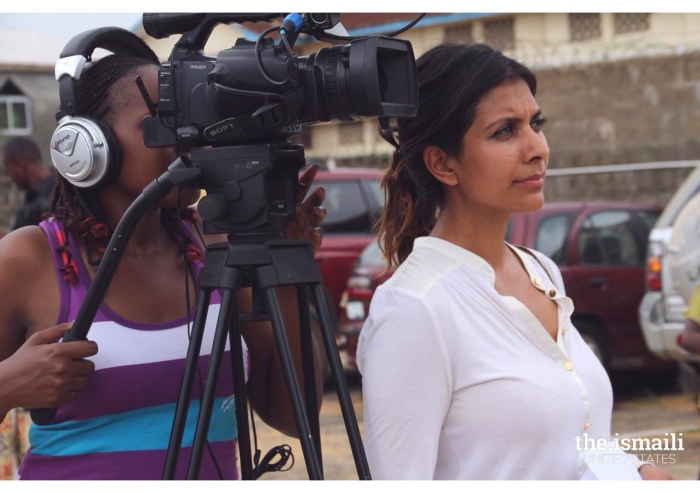Art imitates life, it has been said; yet, we can look back through the annals of history and see that today, life imitates art, offering us a sense of déjà vu. There have been many pandemics in the past, and we need to see the current coronavirus crisis in perspective, though it may be of little comfort as we seclude ourselves from the world around us.
The Past and the Present
First, some brief history, grim though it may be. The Plague of Justinian in the 5th century affected Constantinople and led to over 30 million deaths, half the world’s population; pestilence was recorded at the time of the Prophet (pbuh), with perhaps 25,000 dying during the plague of Emmaus (Syria), including some of his Companions; the Black Death of the 14th century caused 200 million deaths; smallpox eradicated 90% of the indigenous people of the Americas, allowing Cortez to conquer the Aztecs; and AIDS led to 35 million lives being lost.
Many of these catastrophes have been depicted by artists, perhaps the most famous and vivid canvas being “The Triumph of Death,” painted by Pieter Bruegel the Elder, in 1562, a time between the plagues and wars that engulfed Europe. Many others have painted scenes of epidemics illustrating the despair and helplessness experienced at such times. In the Medieval Age, people turned not only to God to save them from these catastrophes, they often believed in superstition and the fake news of the day to turn against others as scapegoats...lepers, the poor, foreigners, suspected witches, and the Jews.
We are fortunate that our situation, while tragic, is no comparison to those of times past, as we have modern medicine and facilities, and hope, commodities unavailable then.
“April is the cruelest month,” wrote poet T.S Eliot in his masterpiece, the “Wasteland.” He wrote after the First World War when millions had suffered and perished from the ravages of battle and the 1917 influenza pandemic, misnamed the “Spanish Flu.” Europeans at that time thought they were indeed facing the apocalypse.
During the next war, Albert Camus’ 1947 novel, “The Plague,” described an Algerian town afflicted and quarantined a century earlier due to cholera. It has been interpreted as an allegory, comparing the devastation caused by uncontrollable forces of nature to those caused by humanity out of control—the Nazi occupation in particular.
That same year, Iraqi poet Nazik al-Malaika wrote about the agony of cholera engulfing Cairo, a grief-stricken city with 10,000 deaths. It is instructive to read her poem and contrast the description to our own times, despite our healthcare system being strained to capacity.
“It is dawn.
Listen to the footsteps of the passerby,
in the silence of the dawn.
Listen, look at the mourning processions,
ten, twenty, no… countless.
...
Everywhere lies a corpse, mourned
without a eulogy or a moment of silence.
…
Humanity protests against the crimes of death.
…
Even the gravedigger has succumbed,
the muezzin is dead,
and who will eulogize the dead?
O Egypt, my heart is torn by the ravages of death.”
An early 20th-century disease in Ghana which killed 100,000, is recorded in an Arabic qasida by al-ḥājj 'Umar ibn Abī Bakri of Kete-Krach, in which the agonies of the “Tunkuyau,” are described in vivid detail. Those with strong constitutions may read it here. But we can relate to a partial description as if he were writing today:
“I ask you, O people,
Do you know of any medicine against Tunkuyau?
As powerful and valiant that a man can be,
He will be thrown down instantly by Tunkuyau.
Many a leader can be seen cowering,
Wailing at home from Tunkuyau.
We have known no ailment like it before.
Our medicines are ineffective against Tunkuyau.
It ends with a supplication, including these lines:
“By the Tōra of Mūsā, and the glory of al-Zabūr
As well as your Injīl, save us from Tunkuyau.
We call upon you, O Repeller, O Mighty Lord,
By our Furqān, save us from Tunkuyau."
Tripoli, Libya, was also afflicted by the plague back in 1785. Miss Tully, an English resident at the time, wrote about fumigation and social distancing, as well as the spread of the disease to Sfax, Tunisia, where 15,000 perished, half the town’s population.
Even earlier, in 1349, Syrian historian Ibn al-Wardi, in “An Essay on the Report of the Pestilence,” described the Black Death with an eerie similarity to what we face today.
“The plague began in the land of darkness. China was not preserved from it. The plague infected the Indians in India, the Sind, the Persians, and the Crimea. The plague destroyed mankind in Cairo. It stilled all movement in Alexandria. Then, the plague turned to Upper Egypt. The plague attacked Gaza, trapped Sidon, and Beirut. Next, it directed its shooting arrows to Damascus. There the plague sat like a lion on a throne and swayed with power, killing daily one thousand or more and destroying the population.”
Al-Wardi ends with a prayer: “Oh God, it is acting by Your command. Lift this from us. It happens where You wish; keep the plague from us.” He was to succumb himself to the disease two days after completing his work.
The Prescience of Film
Eavptians
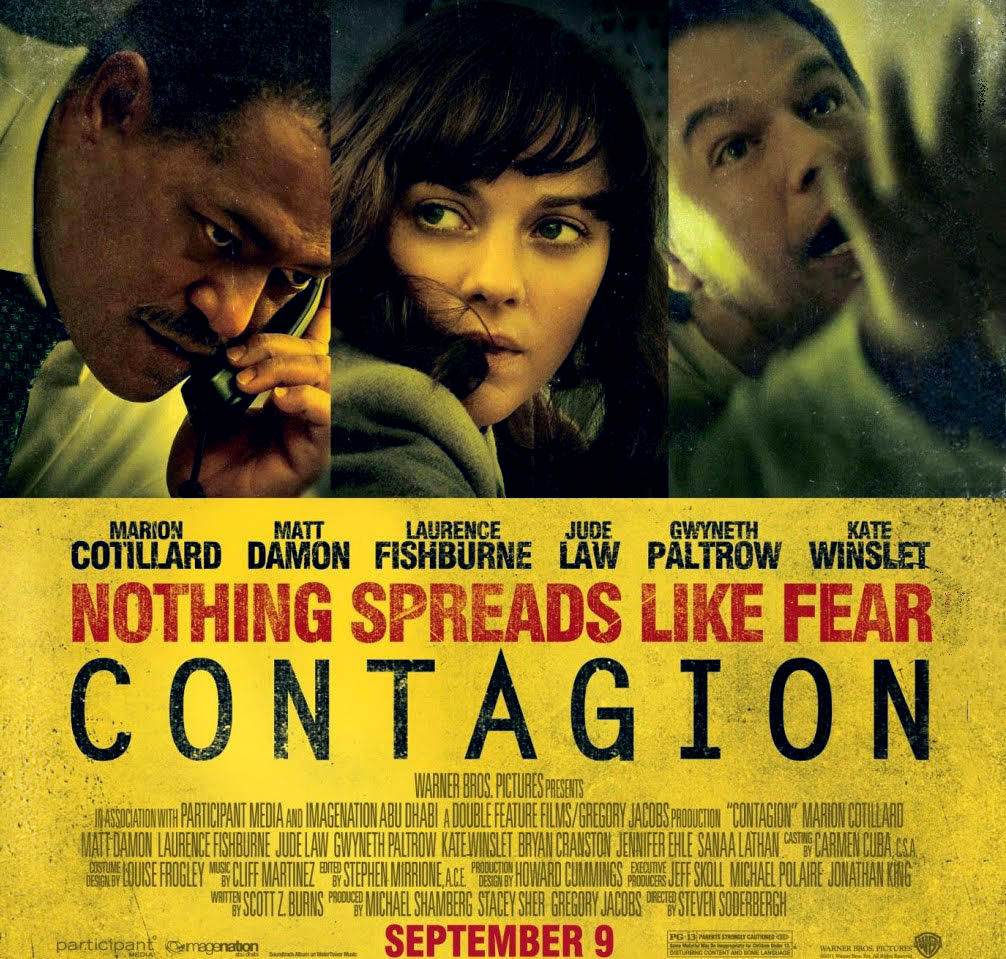
Film buffs may be familiar with some recent productions, all without distinction and eminently forgettable, that have dealt with imaginary epidemics. They include the 1995 film, “Outbreak,” starring Dustin Hoffman, and “Contagion,” which describes societal collapse following a virus pandemic, one of the latest in this genre. It does, however, end on a positive note, with the line, “Society is better off in a plague when everyone works together and cares for one another, and tries to muddle through a nightmare.” Certainly, an apt description of what we are witnessing today, as we grasp at numerous potential solutions for salvation.
The acclaimed South Korean film, “My Secret Terrius,” mentions coronavirus and depicts social distancing as a prophylactic. And the popular children’s animated film, “Tangled,” tells us that Rapunzel lived in the village of Corona, was kidnapped by a witch, and imprisoned in a tower. Children may well relate to this tale today, claustrophobic and unable to play outside. This story may well have its origins in the story of Rudabeh, found in the Persian epic, the Shahnameh of the 11th century.
History Repeated
“There is no present or future - only the past, happening over and over again now,” wrote playwright Eugene O'Neill. It certainly seems so, as we recall the Bubonic Plague,
Rudabeh
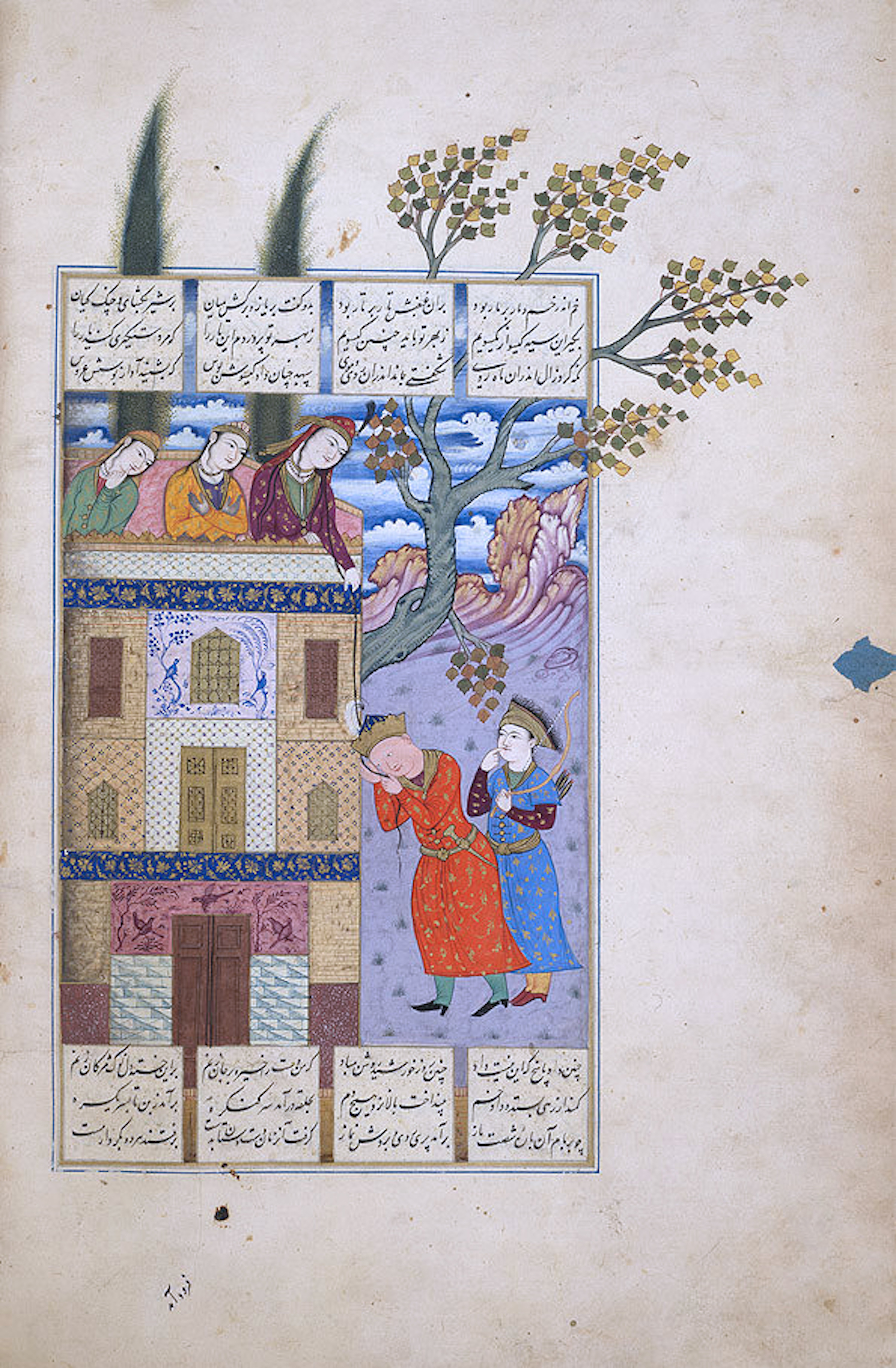
Tuberculosis, Typhoid, Cholera, the “Spanish Flu,” Polio, AIDS, SARS, Ebola - just a few of the epidemics that have decimated populations in recent memory and recorded in great detail in historical accounts, as well as in art and literature.
In our globalized world, the threat of disease is even more palpable now, as populations cross frontiers in a matter of hours, perhaps carrying with them invisible microbes with deadly intent. There are no more frontiers, physical, or imagined.
Interestingly, it is reported that Ibn Sina (d. 1037) first postulated that diseases may be caused by microbes, and that isolation may prevent them from spreading. Possibly, Italian sailors and traders may have learned about this, leading to the term “quarantena,” or “the forty.” Ibn al-Khatib (d.1374), a vizier in the Nasrid court in Granada, investigated the contagious aspects of the disease, centuries before Louis Pasteur’s experiments in France. And the Andalusian writer Ibn Khatimah (d.1369) wrote a treatise about preventing contagion. He recognized that outbreaks of plague seemed to be related to the arrival of contaminated men and that isolated prisoners in Seville and North African nomads remained uncontaminated. His recommendation was isolation for those infected.
We can recall the leadership of Mawlana Sultan Mahomed Shah during the bubonic plague that engulfed Bombay in 1897. He provided facilities and supported the research of a vaccine there that eventually countered the disease. As the public was wary of the vaccine, he led by example, writing in his Memoirs: “It was in my power to set an example. I had myself publicly inoculated, and I took care to see that the news of what I had done was spread as far as possible and as quickly as possible.” Emboldened by his example, many in the Jamat, and others, took the vaccine, saving countless lives throughout the city.
The threat of pandemics was noted by Mawlana Hazar Imam in his 2010 LaFontaine-Baldwin lecture, when he said, “Almost everything now seems to “flow” globally – people and images, money and credit, goods and services, microbes and viruses, pollution and armaments, crime and terror.” The veracity of that observation is clear.
What remains a fog, to be uncovered by future historians, is how woefully unprepared the world has been in this crisis, and how dismal our responses have been. Secrecy, complacency, hubris, ignorance, and an overabundance of self-confidence by politicians and governments in overcoming this calamity seem to be a contemporary disease as well.
The Cold War may be over but we are unprepared for the Bacterial War, even with our antibiotics and medical equipment. Ibn Sina would be turning in his grave, embarrassed at our inability, in this day and age, to have sufficient masks and gloves to protect ourselves.
It is also worrisome that while COVID-19 can infect anyone, it is not an equal opportunity disease. It is the poor and those living in close quarters with others who are most at risk, as they have the least resistance due to health and living conditions, poor nutrition, and inadequacy of attainable healthcare. Millions do not live in affluent and secluded properties and need to work to survive, especially in the developing world. A choice between risking disease and feeding one’s family is an unenviable one. As always in a crisis, it is the poor, the weak, and the marginalized who suffer most.
The sudden disruption of economic activities and restrictions on movement, without an adequate safety net, has created additional problems in many countries. An increase in poverty is almost certainly going to be a global phenomenon, which no one has even attempted to address thus far. Neutralizing the virus is just the beginning of a long road to recovery, with many millions continuing to endure the effects of this crisis.
Lessons from the Pandemic
What do these impressions of life and death by artists, poets, and novelists, inform us about conditions today, besides our sharing in the dread felt by the afflicted throughout the centuries? Perhaps the most important lesson is that of humility, that nature is a force far greater than the ability of humanity to control and mold to its will. Whether they are weather-related events, natural disasters, or epidemics, we have limited responses.
Ibn Sina
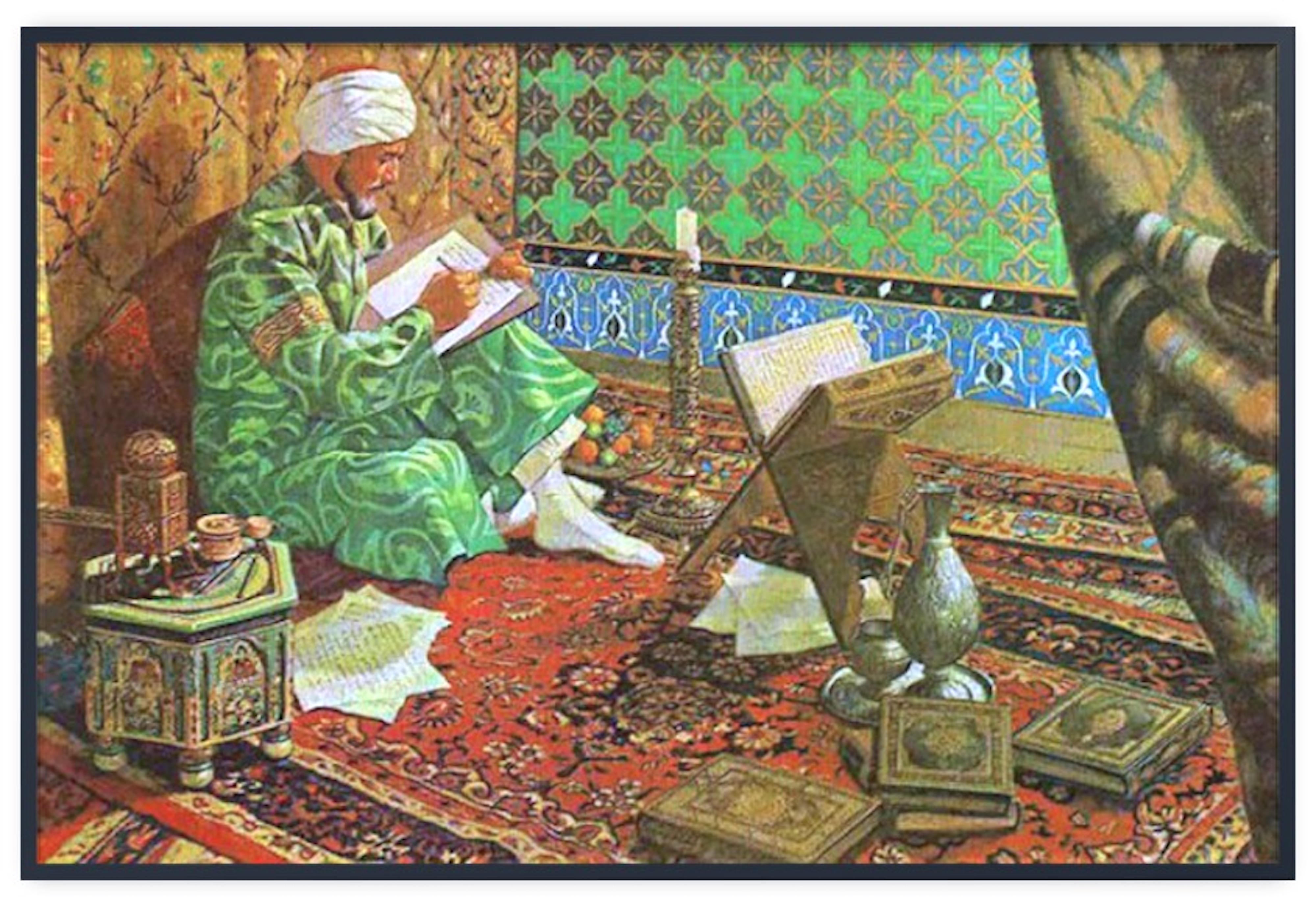
We have been given a collective shock with the realization that we are indeed, not masters of the universe, and our ability to determine our future is not all in our control. However, there are actions that can be taken to mitigate disasters for the human race and its future. This may be a warning to show greater concern for the environment, as Pope Francis suggested recently.
We do understand the causes of environmental degradation, and that the environment must be respected and nurtured, as it is the source of life, from the water we consume to the trees that offer us shade and the clean all we breathe.
We have polluted the atmosphere, the rivers, and the seas, in our march for progress. Yet, an unseen microbe can be the cause of destruction, affecting anyone and everyone, from the leaders of countries to the rich and poor alike - and even to the remotest tribe, the Yanomami, hidden deep in the Amazon. Indeed, scientists have suggested a link between deforestation and the rise in infectious diseases, of which the Amazon is a prime example. We ignore nature and its protection at our own peril.
This invisible virus is a wake-up call. That we can and must change our behavior to affect and improve the climate is no longer a debate, despite those who prefer to ignore facts and imitate ostriches. We have witnessed the results of those who have denied the threat and severity of this pandemic, and ignore the obvious, even at this late stage. This may also awaken those who reject medications such as polio or measles vaccines, as those infected now may well reconsider, hoping for such a miracle prevention.
Today’s Soldiers
Wars are fought and won with soldiers, superior equipment, technology, strategy, and tenacity. None of these are useful for today’s global threat. It is the doctors, nurses, emergency personnel, ordinary farm workers picking vegetables and fruit, delivery truck drivers bringing us supplies, and the grocery store clerks who are on the frontlines, risking lives in a war to save the rest of us, often losing their own. They are the soldiers of today, heroes, and heroines who deserve medals in their effort to fight this scourge, and who offer us hope and survival.
Our own Ismaili healthcare workers all over the world are a part of this contingent of soldiers, working in the Emergency Rooms and ICU wards. Others from our global Jamat have offered personal protective equipment from their stores, made and donated masks, as well as food and needed items to hospitals, neighbors, and others. We are all in this together - for our own sakes.
This crisis will end but it will not be forgotten, as there are lessons here for future generations. And because artists and novelists are keen sensors who reflect social conditions of their time, this episode in history, with its impact, failings, successes, and new soldiers, will be revisited, recalled, and immortalized, both in word and paint—for life may be short but art transcends time.
Note: For a detailed description of the Black Death in Europe and the Middle East, see the thesis, “The Medical Response to the Black Death,” by Joseph A. Legan, James Madison University, Spring 2015.


